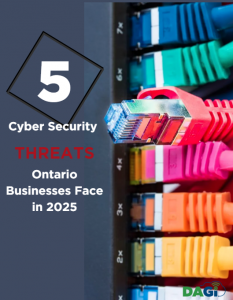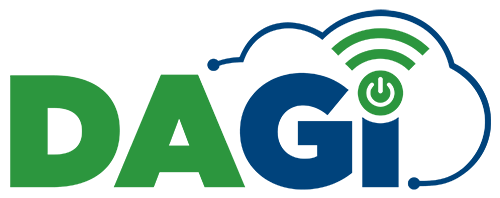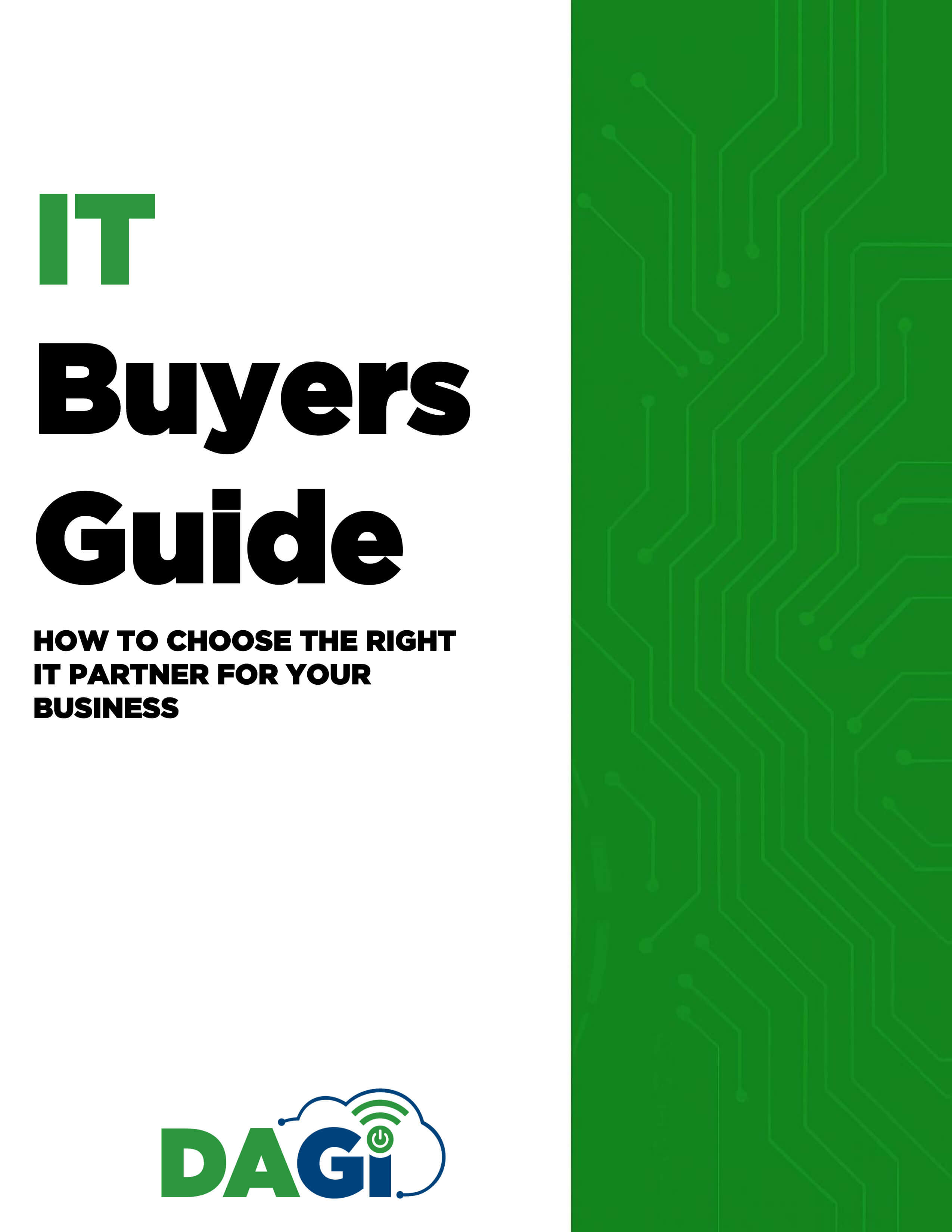 The New Cybersecurity Reality for Ontario small and mid-sized businesses (SMBs)
The New Cybersecurity Reality for Ontario small and mid-sized businesses (SMBs)
It’s 2025, and cyber threats have gone local. Ontario’s small and mid-sized businesses — from law firms in London to manufacturers in Windsor — are now prime targets for increasingly sophisticated attacks.
Here are the five biggest threats to watch for this year, and exactly how to stop them before they cause damage.
- Business Email Compromise (BEC)
The Threat:
Hackers gain access to your business email and impersonate you to request wire transfers, send fake invoices, or trick clients into sending money.
Why It’s Worse in 2025:
AI can now mimic writing styles, making fake emails harder to spot.
How to Stop It:
- Turn on Multi-Factor Authentication (MFA) for all email accounts.
- Verify unusual requests by phone or in person.
- Use email filtering and login alerts.
- Limit payment authorization permissions.
- Ransomware 2.0
The Threat:
Attackers steal your data before encrypting it, then demand payment to avoid publishing it.
Why It’s Worse in 2025:
The “double extortion” model means even good backups aren’t enough — your private data could be leaked.
How to Stop It:
- Keep immutable backups that can’t be altered.
- Test restores quarterly.
- Use Endpoint Detection & Response (EDR) software.
- Segment networks to limit spread.
- Supply Chain Attacks
The Threat:
Hackers compromise one of your trusted vendors and use that connection to get into your systems.
Why It’s Worse in 2025:
More vendor integrations mean more potential entry points.
How to Stop It:
- Vet vendors’ security before connecting systems.
- Apply Conditional Access rules to vendor accounts.
- Require MFA for all third parties.
- Review vendor access logs monthly.
- AI-Powered Phishing
The Threat:
Attackers use AI to create hyper-personalized phishing emails that look like they came from someone you know.
Why It’s Worse in 2025:
No more generic “Dear Sir/Madam” messages — these feel personal and urgent.
How to Stop It:
- Run regular phishing simulations for staff.
- Invest in AI-powered email security.
- Limit public exposure of staff info.
- Encourage a “pause and verify” culture.
- Insider Threats — Accidental or Malicious
The Threat:
Breaches caused by employees — whether intentional or through human error.
Why It’s Worse in 2025:
Hybrid work and cloud file sharing make data easier to move and harder to track.
How to Stop It:
- Apply Least Privilege Access policies.
- Set file activity alerts.
- Revoke accounts immediately when staff leave.
- Train employees on safe data handling.
Why These Threats Hit Ontario SMBs Hard
Local businesses run on trust. A single breach can cause lasting damage to your reputation, lead to compliance fines under PIPEDA, and make insurance coverage harder to get.
Your 2025 Cybersecurity Game Plan
To protect your business, focus on layered security:
- Strong Access Controls – MFA, least privilege, vendor restrictions.
- Continuous Monitoring – 24/7 alerts for unusual activity.
- Incident Response Plan – Clear steps when something goes wrong.
- Regular Testing – Backups, phishing drills, disaster recovery.
- Ongoing User Training – Twice-yearly updates for your team, ideally monthly.
📄 Checklist: 2025 Cyber Threat Readiness
Print this out and keep it by your desk — or share with your IT partner to review together.
✅ MFA is enabled on all accounts — staff, vendors, admins
✅ Backups are immutable and tested every quarter
✅ EDR is installed on all endpoints
✅ Vendor logins have Conditional Access and MFA
✅ Staff have completed phishing training in the last 6 months
✅ File sharing and permissions follow least privilege rules
✅ Incident Response Plan is documented and tested
Final Thought:
The best time to prepare is before the attack. In 2025, that means shifting from a “hope nothing happens” mindset to a proactive security plan that closes the door on these five threats before they ever reach your business.






